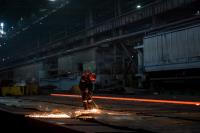 Add My Company
Add My Company
Sign In

THINGS TO CONSIDER WHEN WELDING DISSIMILAR METALS
Many welding projects will require you to join two dissimilar metals together. In order to achieve strong, high-quality welds when working with dissimilar materials, several factors must be considered, including the type of materials you’re welding, the style of welding process you’re working with, and the temperature of the workpieces. With the correct tools and knowledge, it’s possible to weld many dissimilar metals together successfully. Today, we will discuss how welders create strong, long-lasting joins between different metals.
What Are Dissimilar Metals?
Dissimilar metals have different properties, with the nobility being the property that determines how corrosion resistant a particular metal is. How easily a metal gives up its electrons correlates with its corrosion resistance. Noble metals are better at holding onto their electrons than base metals, making them more corrosion resistant.
When two dissimilar metals meet under the right conditions, the nobler metal will naturally take electrons from the less noble metal. For example, stainless steel is more noble than aluminium and will take electrons from it whenever it can, which over time will corrode the aluminium if there is an electrolyte present (such as water). The more noble a metal is than another, the higher the chance of corrosion occurring. Understanding where metals rank on the scale of nobility aids welders in understanding which metals are likely to co-operate with each other. Here is a list of the most common metals and their nobility:
Most Noble
Gold
Silver
Titanium
Stainless Steel
Copper
Brass
Tin
Lead
Carbon steel
Aluminium
Zinc
Least Noble
Why Weld Dissimilar Metals?
Attempting to fuse different metals can lead to corrosion and weak joins. Still, it’s common practice to weld dissimilar metals as it can often be beneficial to a project. Having more than one type of metal in the same workpiece can utilise the properties of both; allowing for the strength, ductility and weight of different workpieces to be altered at different joins.
Sometimes the benefit is cost-effectiveness. For example, you may need to use aluminium for a specific part of your weld for its lightweight properties; however, aluminium tends to be more expensive than metals like steel, so using aluminium sparingly and welding it to cheaper steel can save you money on materials.
Things to Consider When Welding Dissimilar Metals
While welding dissimilar metals can be advantageous, you must approach the process with care and consideration. You may end up damaging or destroying your workpieces if they are welded incorrectly.
Fusion Welds
The correct welding process is required to join dissimilar metals together successfully. Fusion welding, such as metal inert gas welding, which relies on MIG welding gas, and tungsten inert gas, which uses TIG welding gas are the techniques of choice for most dissimilar metals. Compared to other joining methods, fusion welding adds more filler. Welders should choose a filler that matches the strength of the weaker metal to reduce the risk of cracking—using a filler with greater tensile strength than the weaker metal can put unnecessary strain on the joint and result in weld failure.
It’s also worth noting that you may be trying to weld together two types of metal suited to different welding styles. Aluminium, for example, is typically welded using TIG, whilst steel is often welded using MIG. When fusing the two, a decision will have to be made over which style best suits the project. Please read our article on the difference between TIG and MIG welding to learn more about the two processes.
Metal Melting Points
It is crucial to be aware of the melting points of your workpieces, as different metals melt at drastically different temperatures. For example, steel generally won’t melt until it is heated to around 1370oC, but aluminium will start to melt when it reaches 660oC. Therefore, welders will need to modify their technique by ensuring a temperature is reached that is high enough to melt both metals, allowing them to fuse.
Thermal Expansion
Different metals contract and expand at different rates when heated or cooled. Residual stress can be increased at the weld point if you attempt to join two metals with thermal expansion rates that are too varied. This stress is most prevalent in the intermetallic zone – the point where the two metals blend together. To weld metals with drastically different thermal expansion rates, welders use methods that join metals whilst creating a minimal intermetallic zone.
The Products End Environment
The environment in which the finished workpiece will be used will affect its long-term durability and should be considered when selecting which metals to the for the project. For example, if left unprotected, carbon steel will likely corrode in salt-heavy air if steps are not taken to galvanise the material or add a protective coating. The intended environment and use are key considerations for any welding project but are particularly important when welding dissimilar metals. You will have to consider the suitability of two different materials.
Incompatible Metals
An experienced welder with a good knowledge of the metals they’re working with will know which welding technique to use and which filler is best suited to the application to bridge together unlikely materials. That said, some metal combinations do not respond well to fusion welding, including:
Titanium and steel
Aluminium and copper
Aluminium and stainless steel
This is not to say that you cannot weld these metals together, but a different method will be required. This may include laser welding, diffusion bonding, friction welding or solid-state welding.
As a reputable gas cylinder suppler, Adams Gas understand that there are many approaches to welding and that each process requires a specific type of gas. If you would like any more information about our welding gas and how we can help, please contact us today.
For more information on THINGS TO CONSIDER WHEN WELDING DISSIMILAR METALS talk to Adams Gas
Enquire Now
List your company on FindTheNeedle.

